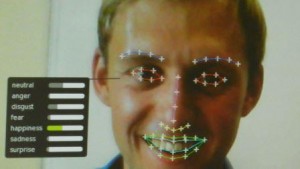More than 70 percent of consumers prefer to buy their furniture in a physical store, but what about their frihetens?
This is a challenge Ikea has been tackling as it tests a variety of approaches to bridging online and in-store experiences. The Scandinavian furniture chain, known for fashionable and functional products including the friheten sofa, launched an entire catalog on Instagram; offers a live-stream, virtual wedding planner; and is now featuring an interior-design video series, called Make Small Spaces Big 360°, on its website.
 These efforts all serve as apt examples of how the combination of physical and digital purchasing is changing the nature of physical shopping. And, more importantly, how retailers can identify the features that make for compelling experiences as shoppers migrate back and forth from physical stores to digital sites.
These efforts all serve as apt examples of how the combination of physical and digital purchasing is changing the nature of physical shopping. And, more importantly, how retailers can identify the features that make for compelling experiences as shoppers migrate back and forth from physical stores to digital sites.
Important to Ikea’s digital shopping endeavors is that they complement both the in-store experience and its famous catalogs, largely by showcasing Ikea products in layouts reminiscent of its stores. But vital to its digital-to-physical success is Ikea’s attention to aligning the experiences with its overall brand personality. The sites are fun, approachable and slightly irreverent, yet authoritative where it matters most – as an expert in interior design.
This is the third in a series that examines how digital technology and its rapid adaptation, across all age groups, is challenging retailers to identify and serve desired customer experiences in a fluid economy. Last week we looked at how Warby Parker is creating digital environments that emulate the shared, relationship-based shopping experience many people still savor with family and friends.
This week, I’d like to look at how Ikea designs its digital assets to reflect its in-store experience and, in doing so, the brand.
Couching furniture preferences
Ikea, which prints about 200 million catalogs in 38 countries, is evidently clear on which furnishings consumers want to touch before buying and which they are happy to order on sight. The answer: Big-ticket and high-touch often means in-store.
While roughly 80 percent of consumers have purchased home furnishings online, roughly 73 percent prefer to shop in-store, according to a 2014 report in Furniture/Today. Almost half (47 percent) said they’d never buy a sofa online (that means you, friheten), while half said they have used a smartphone both before and during a physical furniture shopping trip.
This is generally good news for Ikea’s stores, which are fed customers through its various entertaining online efforts. But Ikea does not have a store in every city, and so it is tasked with converting online window shoppers into actual customers, either through digital purchases or by inspiring them to road-trip to the nearest location.
This is where Ikea’s many clever digital adventures can pay off.
Wardrobes to Weddings
Ikea introduced its first U.S. catalog 30 years ago this summer, when it simultaneously entered the North American market by way of Philadelphia. Straightforward, beautifully photographed and full of umlauts, the catalog captured the style and practicality of the brand, but back then it did not quite portray the playfulness for which Ikea is better known today.
That took bytes, and pluck. Here is how three of Ikea’s efforts are redefining its online-to-in-store experience:
Make Small Space Big: This online video takes the user through a variety of tiny home spaces, from kitchens to closets, and gives advice on how to best maximize the space (with Ikea products, of course). The consumer can use her cursor to view the room at 360 degrees – floor to ceiling and all around. After walking through each room, the video host gives the user a chance to browse the virtual space and learn individual problem-solving tips by clicking on prompts, each of which leads to product information.
Wedding Online: Consider it the least expensive option for tying the knot – and planning the home. Ikea’s virtual nuptial site invites virtual brides and grooms to choose a theme and setting, from beach to forest to circus, and then carry on with the nuptials, via webcam, by live-streaming their own heads and the heads of guests onto bodies portrayed in the setting. Brides and grooms can actually get married this way (with a legit official). According to Adweek, Ikea even offers the paperwork in Sweden! But most of all, the site sets up another opportunity to display a digital showroom to a hot market – one in which potential brides and grooms can explore the IKEA experience in a fun and novel way.
Installations via Instagram: In 2014, Ikea Russia launched a digital catalog via Instagram in a bid to capture the attention (and dollars) of young adults. The mobile-friendly catalog allows users to search for, tag and recall specific products, working pretty much like a regular website. Tap a particular lamp, for example, and the user can navigate to additional photos, video demonstrations and product information. Though limited to Russia, Ikea’s Instagram catalog could feasibly extend to other markets.
Ikea’s history is rich with innovation, risks and occasional missteps; a willingness to do the same digitally is refreshing in an industry that still functions largely on traditional, in-store transactions. Ikea is evidently learning from its experiments, and I hope other retailers do as well.
Next week, let’s evaluate the evolution from mega-mall to power center to online shopping, and what the future will hold in terms of shopping formats.
This article originally appeared on Forbes.com, where Bryan serves as a retail contributor. You can view the original story here.
(290)







